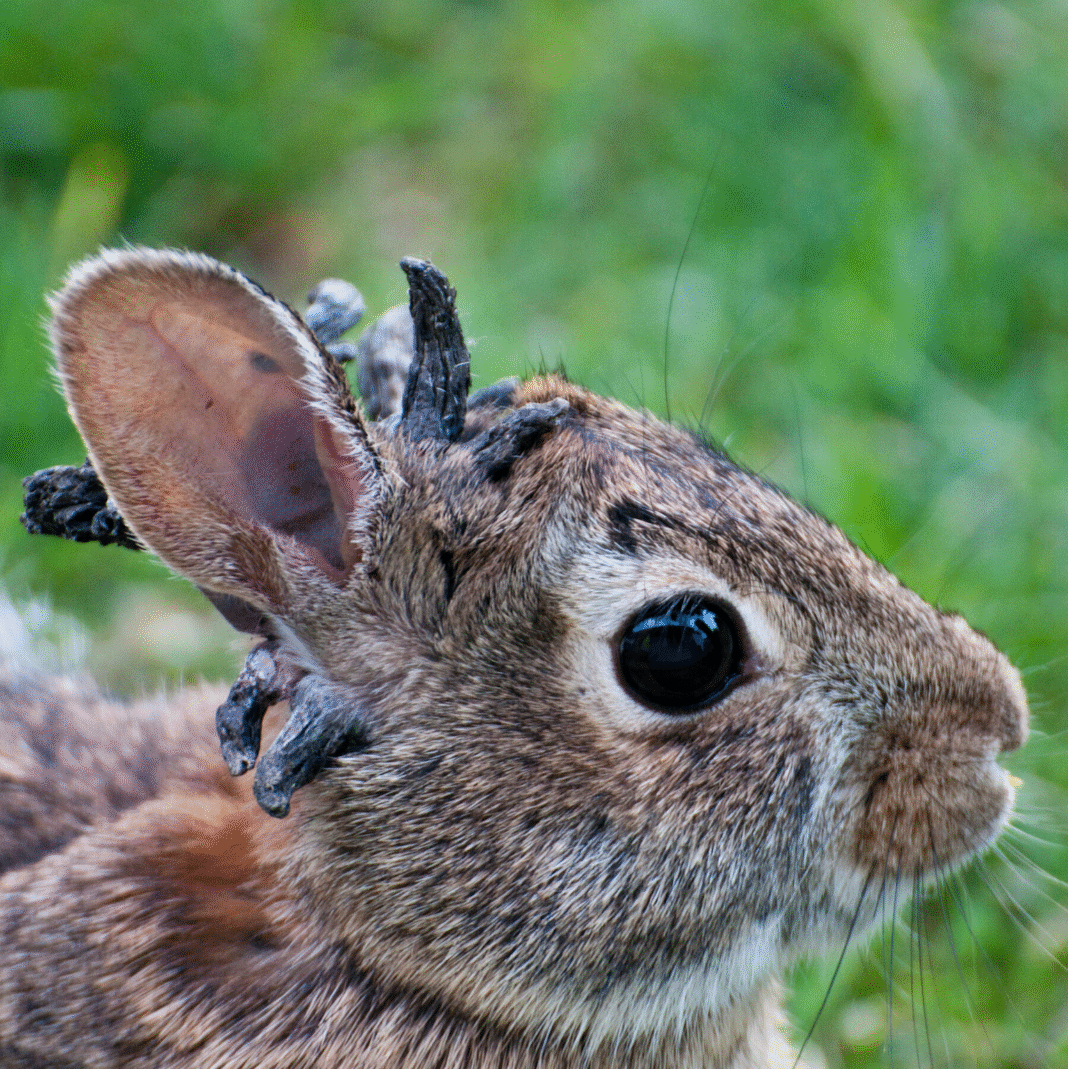Recent sightings of rabbits with disturbing black, horn like growths protruding from their heads and faces have captivated social media and sparked widespread concern among Colorado residents. These so-called “zombie rabbits” have been spotted throughout Fort Collins, creating viral photos that have drawn comparisons to creatures from horror films and post-apocalyptic television shows like “The Last of Us”.

What Are Colorado’s ‘Zombie Rabbits’?
The alarming appearance of these cottontail rabbits is caused by the Shope papillomavirus (SPV), also known as cottontail rabbit papillomavirus (CRPV). This naturally occurring virus creates wart-like tumors called papillomas that develop into dark, horn-like or tentacle-shaped protrusions around the rabbit’s head, face, ears, and mouth.
Colorado Parks and Wildlife spokesperson Kara Van Hoose confirms that the agency has received more than a dozen reports of infected rabbits since photos first began circulating on social media in early August 2025. However, officials note that some reports likely represent multiple sightings of the same infected animals rather than entirely new cases.
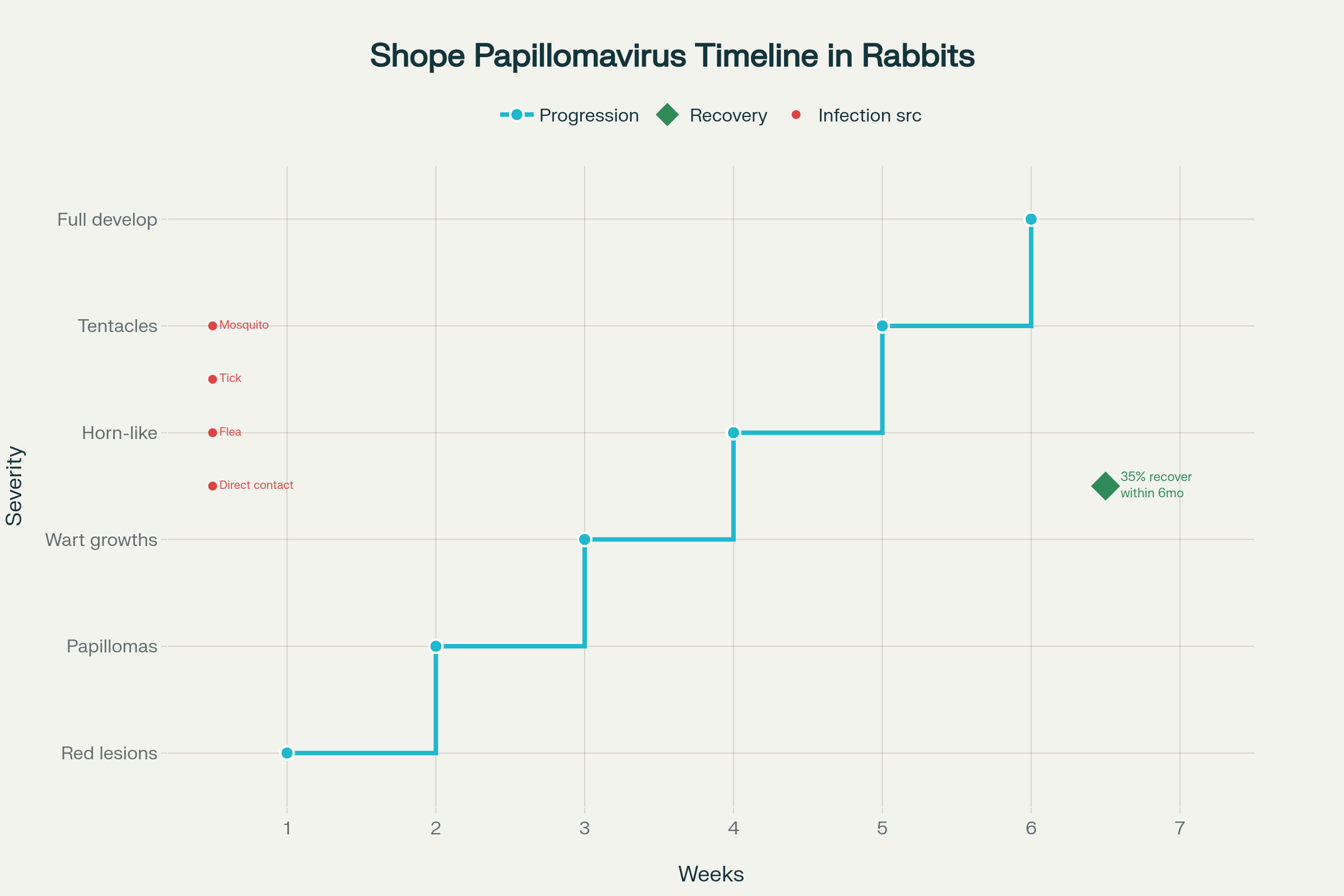
The Viral Social Media Response
The disturbing images have generated intense reactions across social media platforms, with users coining various nicknames including:
-
“Frankenstein bunnies”
-
“Demon rabbits”
-
“Zombie rabbits”
-
“Tentacle rabbits”
One Instagram user commented, “This is how the zombie virus starts,” while another wrote on YouTube, “We’ve got freaking zombie rabbits now?!”. The photos have accumulated thousands of shares and comments, with many viewers initially skeptical about their authenticity.
Understanding Shope Papillomavirus: The Science Behind the Horror
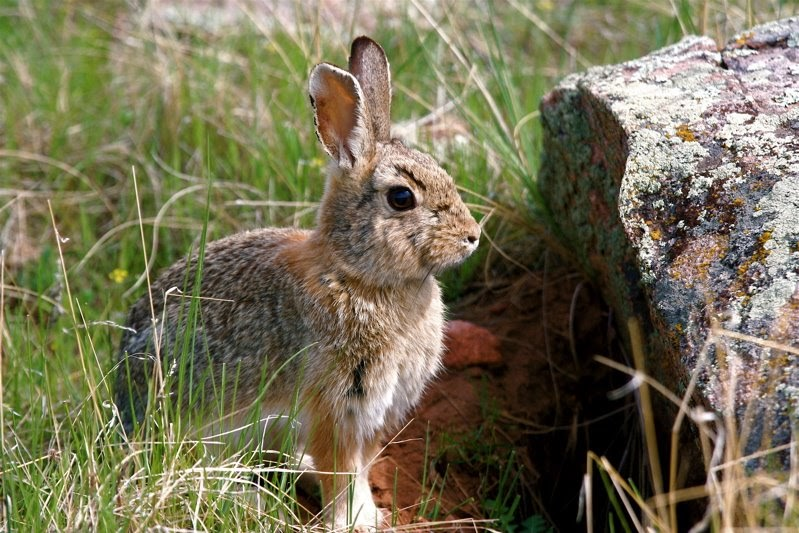
Historical Discovery and Research
The virus was first identified in the 1930s by cancer researcher Dr. Richard E. Shope at Rockefeller University. Shope investigated reports from hunters in northwestern Iowa who described rabbits with several “horn” protrusions on various parts of their bodies, including faces and necks.
This groundbreaking research led to the development of the first mammalian model of cancer caused by a virus. The Shope papillomavirus has since been instrumental in helping scientists understand the connection between viruses and cancer, particularly contributing to research on human papillomavirus (HPV) that causes cervical cancer.
How the Virus Spreads
The Shope papillomavirus spreads primarily through:
-
Insect bites: Mosquitoes, ticks, and fleas are the primary vectors
-
Direct contact: Infected rabbits can transmit the virus to other rabbits
-
Seasonal patterns: Infections peak during summer months when biting insects are most active
Symptoms and Progression
The virus causes several distinct symptoms in infected rabbits:
Early stages (1-2 weeks):
-
Small, red, swollen areas on the skin
-
Usually appears around the head, neck, ears, and eyelids
Development phase (2-6 weeks):
-
Circular papilloma warts form
-
Growths become keratinized and horn-like
-
Black coloration due to abundant melanin pigment
Advanced stages:
-
Horn-like or tentacle-shaped protrusions
-
Growths can reach several centimeters in length
-
May interfere with eating, drinking, or vision if near mouth or eyes
Geographic Distribution and Current Spread
Historically, Shope papillomavirus has been most commonly observed in the Midwestern United States, particularly Iowa and Kansas. However, recent confirmed cases extend the known range to include:
-
Colorado (Fort Collins area)

-
Nebraska
-
Nevada
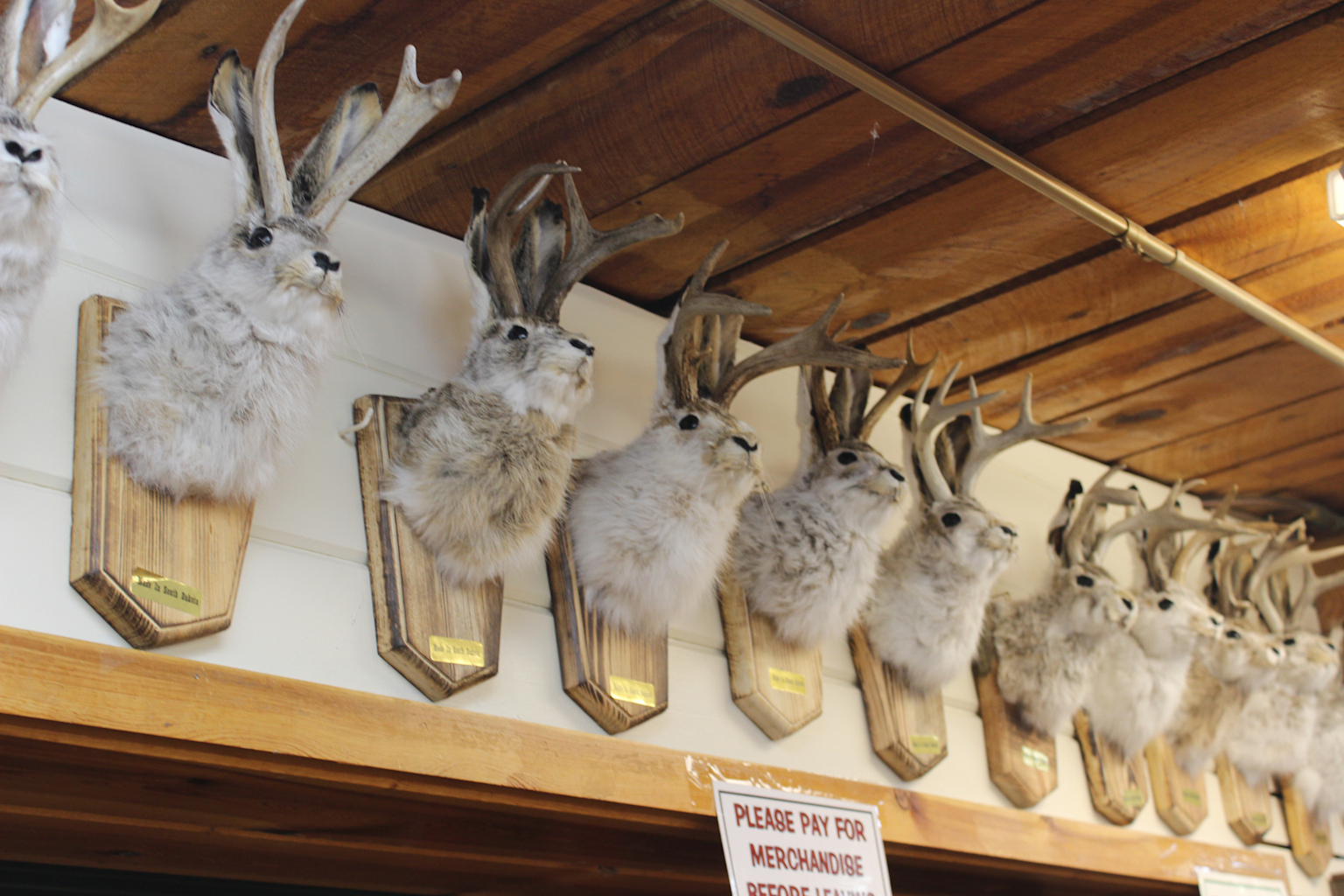
-
New Mexico

-
Texas
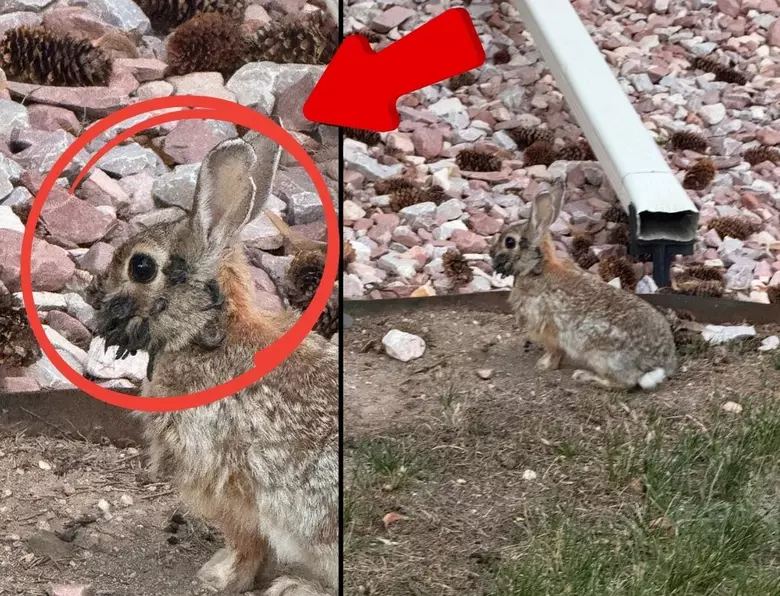
-
South Dakota
The University of Missouri notes that the disease is “seen most frequently in cottontail rabbits of the Midwest”
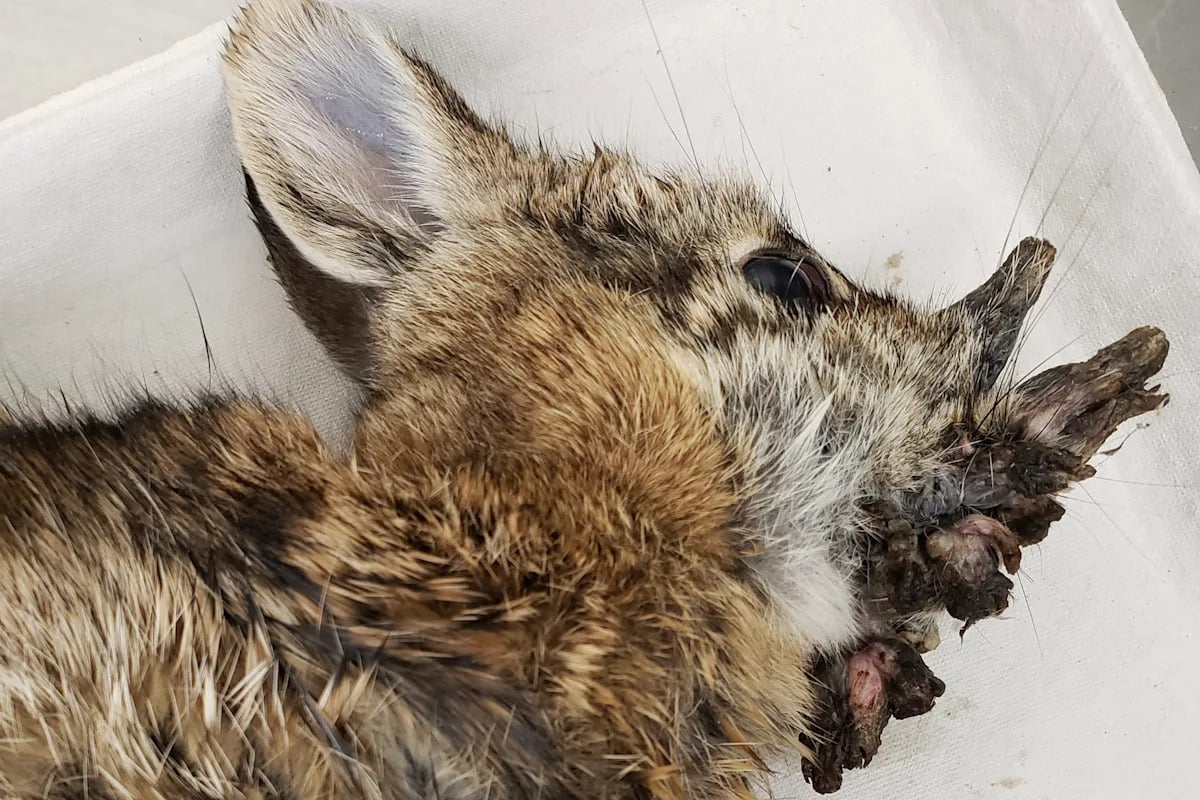
but the recent Colorado outbreak suggests the virus may be expanding its geographic range or becoming more noticeable due to increased social media documentation.
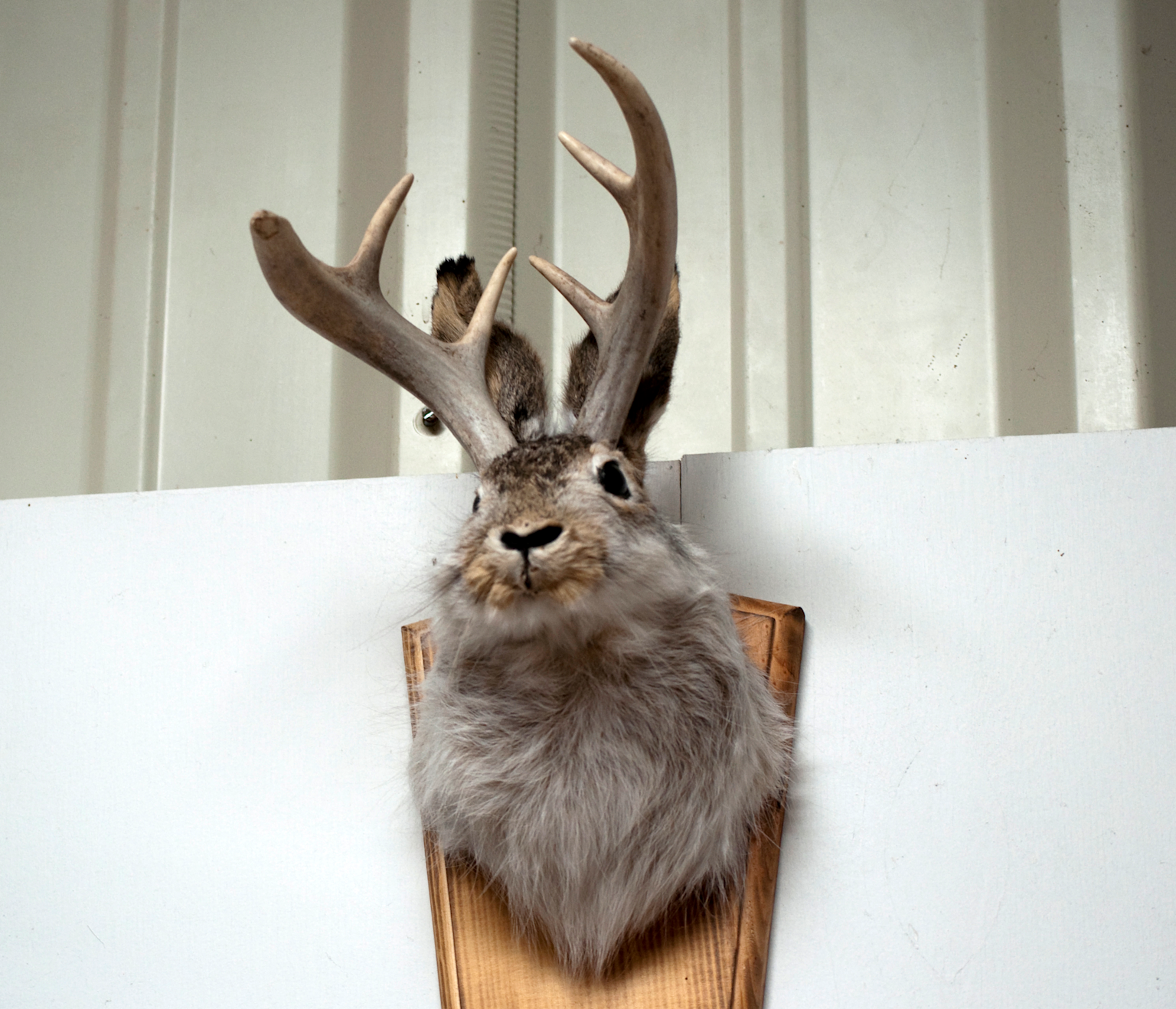
Health and Safety Considerations
No Risk to Humans or Pets
Colorado Parks and Wildlife emphasizes that the Shope papillomavirus poses no known threat to humans, dogs, cats, or other wildlife species. The virus is species-specific, meaning it can only infect rabbits and hares.
Wildlife officials still recommend:
-
Maintain distance: Do not approach or touch infected rabbits
-
Keep pets away: Prevent dogs and cats from interacting with infected animals
-
Follow standard wildlife safety: Never handle wild animals regardless of their health status
Impact on Rabbit Health
While the growths appear alarming, the virus is often benign and many rabbits recover naturally. However, complications can arise when:
-
Growths develop near the eyes, impairing vision
-
Tumors around the mouth interfere with eating or drinking
-
Infected rabbits become more vulnerable to predators due to reduced mobility
Research indicates that approximately 35% of infected rabbits naturally clear the virus within six months, with growths disappearing completely.
Connection to American Folklore: The Jackalope Legend
The Shope papillomavirus may have contributed to one of America’s most enduring folklore creatures: the jackalope. This mythical animal, described as a jackrabbit with antelope horns, has been a staple of North American tall tales for centuries.
Researchers and folklorists suggest that historical sightings of rabbits infected with Shope papillomavirus could have inspired stories of horned rabbits. The virus-induced growths can indeed resemble small antlers or horns, particularly in the early stages of development.
Scientific treatises dating back to 1655, including the Tableau encyclopédique et méthodique, contain stories and illustrations of horned rabbits, indicating that this phenomenon has been documented for centuries across different cultures.
Current Situation in Fort Collins
Resident Experiences
Local Fort Collins resident Susan Mansfield has been observing the same infected rabbit in her yard for over two years. She describes the growths as looking like “black quills or black toothpicks sticking out all around his or her mouth”.
“I thought he would die off during the winter, but he didn’t. He came back a second year, and it grew,” Mansfield told 9News Northern Colorado.
Official Response
Colorado Parks and Wildlife has been fielding numerous calls from concerned residents since the photos went viral. Spokesperson Kara Van Hoose notes that while the images are startling, such infections are not uncommon in the region.
“We go through this every year,” Van Hoose explained, adding that factors like warm weather and increased mosquito populations can influence how prevalent the virus becomes each season.
What to Do If You See an Infected Rabbit
If you encounter a rabbit with unusual growths:
-
Do not approach or touch the animal
-
Keep pets at a safe distance
-
Take photos from far away if desired for documentation
-
Report sightings to Colorado Parks and Wildlife
-
Do not attempt to help or capture the rabbit
For reporting wildlife sightings in Colorado, contact Colorado Parks and Wildlife at their Fort Collins office: 317 W. Prospect, Fort Collins, CO 80526, Phone: 970-472-4300.
Treatment and Management
Wild Rabbit Treatment
Treatment of wild rabbits is generally not recommended or practical. Colorado Parks and Wildlife notes that capturing wild rabbits is extremely difficult due to their speed and wariness. Additionally, many infected rabbits recover naturally without intervention.
Officials only express concern when growths:
-
Obstruct the rabbit’s vision
-
Interfere with the ability to eat or drink
-
Become so large as to significantly impair the animal’s mobility
Domestic Rabbit Care
For pet rabbits that contract the virus, veterinary treatment may include:
-
Surgical removal of tumors before they become malignant
-
Regular monitoring for recurrence
-
Prevention of scratching to avoid secondary infections
Domestic rabbits typically experience more severe symptoms than wild rabbits, with the majority developing invasive cancers that can be fatal if untreated.
Reducing Infection Risk
While the virus occurs naturally and cannot be completely prevented, certain measures may reduce infection rates:
-
Pest control: Reducing mosquito, tick, and flea populations in residential areas
-
Habitat management: Maintaining clean environments that don’t attract disease vectors
-
Indoor housing: Keeping domestic rabbits indoors during peak insect season
Climate and Environmental Factors
Experts note that climate change and warming temperatures may be contributing to longer active seasons for disease-carrying insects. This could potentially lead to:
-
Increased virus transmission rates
-
Expanded geographic range of infections
-
More frequent outbreaks during extended warm periods
For Fort Collins residents and visitors, these remarkable rabbits serve as a living reminder of the natural world’s capacity to surprise us, even in our own backyards. While their appearance may be unsettling, these “zombie rabbits” are simply wild animals dealing with a natural challenge, deserving of our respect, distance, and scientific curiosity rather than fear.
For more information about wildlife in Colorado or to report unusual animal sightings, visit the Colorado Parks and Wildlife website or contact their Fort Collins office at 970-472-4300.
Reference
1. https://petapixel.com/2025/08/13/eerie-photos-show-colorado-rabbits-with-tentacles-growing-out-thei
r-faces/
2. https://uk.news.yahoo.com/pictures-zombie-rabbits-twisting-black-013500409.html
3. https://www.forbes.com/sites/matthewbinnicker/2025/08/13/is-the-virus-causing-zombie-rabbits-a-thr
eat-to-humans/
4. https://www.firstpost.com/explainers/zombie-rabbits-tentacles-spv-virus-us-13924636.html
5. https://katu.com/news/nation-world/zombie-rabbits-virus-no-threat-colorado-parks-wildlife-cpw-shop
e-papillomavirus-disease-horns-tentacles
6. https://www.independent.co.uk/news/world/americas/frankenstein-rabbits-with-tentacles-black-horn-b
2807333.html
7. https://ca.news.yahoo.com/colorado-residents-alarmed-rabbits-black-151411404.html
8. https://www.aol.com/know-horned-zombie-rabbits-hopping-145902650.html
9. https://news.sky.com/story/pictures-of-zombie-rabbits-with-twisting-black-horns-go-viral-so-are-they
-real-13411379
10. https://time.com/7309600/zombie-rabbits-virus-colorado/
11. https://www.cnn.com/2025/08/14/us/rabbits-colorado-horns
12. https://www.ndtv.com/world-news/zombie-rabbits-bunnies-in-colorado-spotted-with-bizarre-horn-like
-tentacles-9084069
13. https://www.instagram.com/reel/DNV7JUuxrac/
14. https://www.axios.com/2025/08/13/colorado-rabbits-horns-tentacles-virus-ticks15. https://www.cbc.ca/news/science/rabbits-horn-like-growths-1.7608700
16. https://www.yahoo.com/news/articles/rabbits-horns-sighted-across-colorado-200923865.html
17. https://uk.news.yahoo.com/virus-colorado-creating-frankenstein-rabbits-194043716.html
18. https://www.youtube.com/watch?v=u0im6FpAPdc
19. https://en.ammonnews.net/article/83842
20. https://www.nbcnews.com/news/us-news/rabbits-horns-colorado-are-called-frankenstein-bunnies-rcn
a224941
21. https://en.wikipedia.org/wiki/Shope_papilloma_virus
22. https://pmc.ncbi.nlm.nih.gov/articles/PMC7118894/
23. https://www.cpr.org/2025/08/13/colorado-rabbits-horns-shope-papillomavirus/
24. https://pmc.ncbi.nlm.nih.gov/articles/PMC6501911/
25. https://www.petmd.com/rabbit/conditions/viral/c_rb_shope_papilloma_virus
26. https://theweek.com/science/colorado-rabbits-horns-papilloma-virus
27. https://www.si.edu/stories/worlds-scariest-rabbit
28. https://www.msdvetmanual.com/all-other-pets/rabbits/disorders-and-diseases-of-rabbits
29. https://www.independent.co.uk/bulletin/news/zombie-rabbits-american-town-b2807151.html
30. https://pmc.ncbi.nlm.nih.gov/articles/PMC4493010/
31. https://www.ncbi.nlm.nih.gov/books/NBK321758/
32. https://www.animalresearch.info/en/medical-advances/diseases-research/human-papillomavirus-hpv
33. https://www.sciencedirect.com/topics/medicine-and-dentistry/cottontail-rabbit-papillomavirus
34. https://en.wikipedia.org/wiki/Jackalope
35. https://www.sciencedirect.com/topics/agricultural-and-biological-sciences/cottontail-rabbit-papillomav
irus
36. https://www.cbc.ca/lite/story/1.7608700?feature=random
37. https://www.incomediary.com/create-viral-content/
38. https://www.newsweek.com/colorado-rabbits-growing-tentacles-sparks-warning-2112809
39. https://kateonconservation.com/2018/12/26/top-tips-for-wildlife-bloggers/
40. https://www.hindustantimes.com/trending/us/colorado-rabbits-spotted-with-scary-horns-and-tentacles
-on-their-head-experts-warn-locals-of-growth-papilloma-virus-101755038786947.html
41. https://cognitiveseo.com/blog/12643/copywriting-techniques/
42. https://www.fcgov.com/naturalareas/wildlife
43. https://ca.news.yahoo.com/creepy-looking-rabbits-tentacles-going-152623446.html
44. https://www.greengeeks.com/blog/21-proven-ways-to-make-amazing-viral-content/
45. https://abcnews.go.com/Technology/wireStory/rabbits-horns-colorado-called-frankenstein-bunnies-124
629409
46. https://sarmlife.com/content-seo/
47. https://cpw.state.co.us/report-sighting
48. https://timesofindia.indiatimes.com/world/us/this-virus-is-turning-rabbits-into-zombie-bunnies-with-ho
rn-like-growths-can-it-spread-to-dogs-or-cats/articleshow/123288055.cms
49. https://expresswriters.com/how-to-create-headlines/
50. https://cpw.state.co.us/contact-us
Check Out : Can We Get DNA From Fossils?

